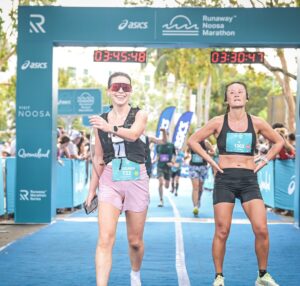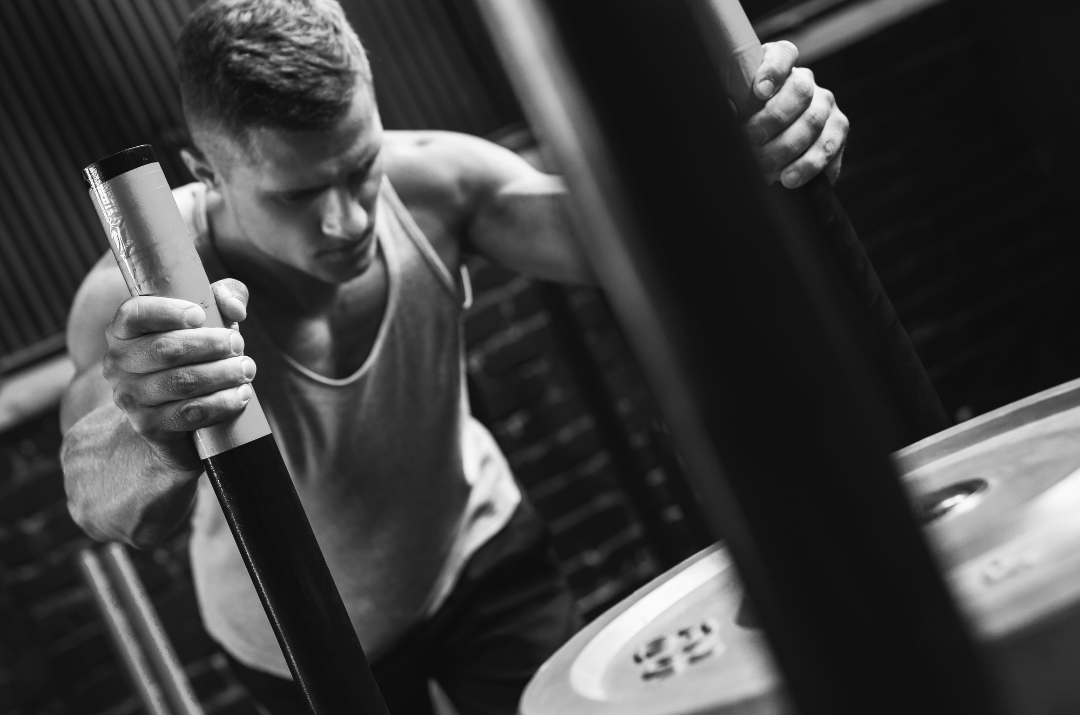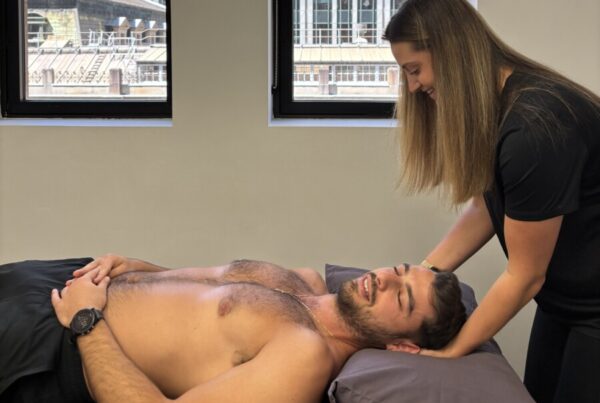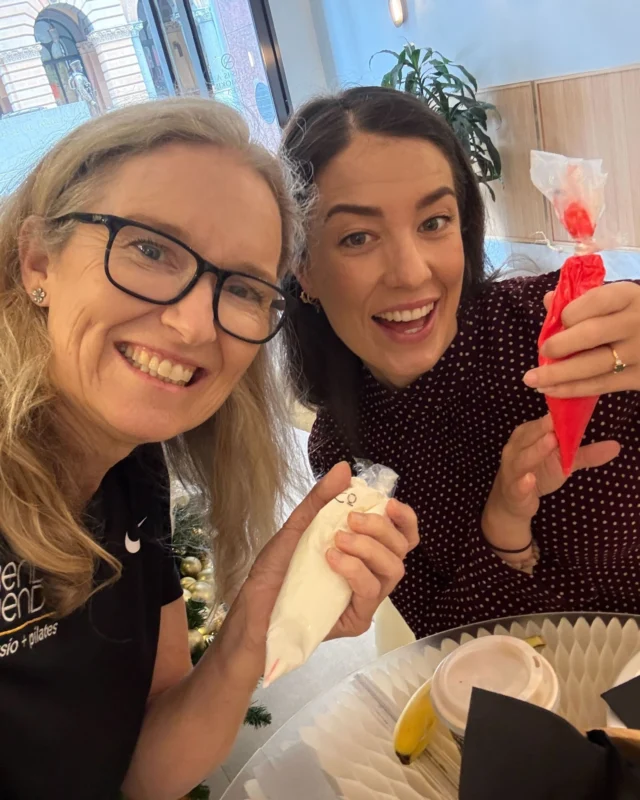Whether you are getting ready to prepare for your first marathon, you are a seasoned marathon runner, or you’re just looking for some tips and tricks with how to approach your training, this is the blog for you! I’m writing this blog based on my own marathon training experience as a Sydney Physio over the last six months, the challenges that have arisen over the course of this period and how I navigated them with my physio cap on.
There are definitely a few things that you might want to think about before you begin your marathon journey.
- What is your current running ability? Do you currently have a personal best time for a 5km, 10km, half marathon or marathon distance?
This will give you an idea as to where your baseline level of running is at and will dictate where you should begin with your training.
This will help with deciding the pace of your runs and allow you to set realistic time/pace-based goals that you can work towards.
- How many days a week are you willing to commit to running?
This will help you to plan out your sessions and decide what kind of running sessions you would like to complete. This will also give you an idea as to what time you will have outside of your running sessions to commit to both strength, mobility and recovery-based sessions.
- What are your goals? Do you have a time in mind or are you just looking to cross the finishing line?
Identifying your goals early on is a good way to help you to structure your training plan and a good way to hold you accountable for how you will action this plan.
Once you have identified these factors, you can start thinking about registering for your race.
Selecting your race:
- As this was going to be my first marathon, I purposefully chose one that was considered a flat, fast and friendly multi-lap course. Hence, I signed up for the Runaway Noosa Marathon. The route consisted of a four-lap course. This really appealed to me, as like many other Sydney runners, I love running laps and laps of Centennial Park and thought that I would be able to somewhat replicate the race route in my training.
- Other routes may be looped, out and back, hilly or trail races, among many others. It’s important to consider these factors before selecting what race you will sign up to, as this will partially dictate what your training plan is going to look like.
With your race selected, you can now devote your attention to your training plan and all the other elements of running and recovery that you will have to factor into the next few months of preparation.
What did the first few weeks of training look like?
I started my training at the beginning of December 2024. I wanted to lay down good foundations from a strength and conditioning perspective and give myself enough time to gradually and progressively build up my running load. For the first few weeks, I decided I was going to run three times a week, completing one easy run, one interval run, and one longer run. But what does this mean? What was I setting out to achieve with each of these runs? Let me give you a quick breakdown:
- Easy Run – Low intensity runs that are short to moderate in duration. The purpose of these runs to is recover and freshen up between harder sessions. The key to easy runs is to relax and enjoy them, trying not to worry about pace or splits. An effective easy run is one that feels truly easy.
- Interval Run – Higher intensity runs that challenge your fastest pace. The goal of an interval run is to stay controlled, build intensity and finally to step up a gear and find your fastest pace. Between each interval, there is a recovery period, where you should keep moving to keep the oxygen flowing to help to prepare you for your next effort/interval.
- Long Run – Long runs are the cornerstone of endurance training. They help you to focus on pacing yourself over longer distances without the intensity of intervals. The goal with longer runs is to gradually increase your distance as your training block progresses, bearing in mind that you will also need to factor in some de-load weeks.
In combination with my running sessions, I decided that I was going to aim to complete two Reformer Pilates sessions and two gym sessions per week. As a physiotherapist, I was very aware of the benefits of these types of sessions with regards to both injury prevention as well as optimising on running efficiency and technique.
Why is it important to include strength and conditioning sessions?
I wanted to make sure that I was targeting all the key areas of strength and conditioning that would help to optimise both my running and recovery. This meant that I had to make sure that I included a variety of different types of gym sessions. These included strength training, core and stability work, mobility and flexibility along with plyometrics. I’ll talk you through the benefits of including sessions like this and then give you an outline of what these sessions included and how they were going to benefit my performance.
Benefits:
- Injury Prevention –
- Running is a high-repetition and high-impact activity. Without adequate muscular strength, the body relies more on passive structures like ligaments, tendons, and joints. This in turn, increases the risk of developing overuse injuries.
- Key muscle groups which runners should focus on include:
- Glutes: Strong glutes help to control hip and knee alignment.
- Hamstrings: Well-trained hamstrings help with deceleration and control at the knee.
- Calves: Training your calves will help with absorbing some of the load associated with running and will help to facilitate propulsion.
- Core: A strong core can help to maintain spinal and pelvic alignment while running.
- Improved Running Economy –
- Running economy relates to how efficiently a runner uses oxygen at a given pace. According to a meta-analysis by Eihara et al. (2022), heavy resistance training (≥ 90% 1RM, 3–5 reps, twice per week for 10–14 weeks) improved both running economy and time‑trial performance significantly, surpassing the effects seen with plyometric training alone.
- This is achieved as:
- The runner has more efficient strides.
- Stronger muscles reduce the energy cost of maintaining form over longer distances.
- It aids with faster recovery post run due to reduced muscular fatigue.
- Force Production and Propulsion:
- Running is essentially a series of single leg hops. The more force a runner can produce per stride, the less effort it will take to run at a given pace.
- Strength training helps to improve ground reaction force and rate of force development. This translates to a more powerful push-off, which can help with speed and acceleration, particularly in trail running or hill running.
- Ground Reaction Force is the force the ground exerts back on the body every time your foot strikes it. According to Newton’s Third Law (“every action has an equal and opposite reaction”), the more force a runner applies to the ground, the more force they receive back, propelling them forward.
- This matters because efficient runners generate higher horizontal (propulsive) GRF and manage vertical GRF better (to reduce impact stress).
What did a typical gym session look like?:
Strength Training –
I included both compound lifts (to reinforce full body integration) and single leg work (as running is a single leg sport).
Examples of Exercises:
- Back Squats
- Reverse Lunges
- Single Leg Press
- Split Squats
- Single Leg RDLs
- Single Leg Calf Raises
Core and Stability Work –
I included a lot of Pilates based core and stability work and would often jump in on some of the classes at Bend + Mend to facilitate this.
Reformer based core exercises that I found helpful included:
- Abdominal Curl Series
- Stomach Pull Heels Up/Down
- Plank Series
- Bunny Hops
- Stomach Pulls on the Wunda Chair
- Pretty much all the Pilates exercises!!
Mobility and Flexibility –
I incorporated a lot of my mobility and flexibility work into both my warmups and cool downs ahead of completing my runs. When warming up, I always complete dynamic stretching. This helps to prime the muscles and prepare the body for the specific demands of running.
Examples of Warm Up Exercises:
- Dynamic Leg Swings (Front to Back and Side to Side)
- Squat to Calf Raise
- Walking Lunges with Torso Rotation
- High Knees/Heel Flicks
- 90/90 Hip Rotations
When cooling down, I reverted to more of a static stretching routine. This aided my post-run recovery and prevented the onset of Delayed Onset Muscle Soreness (DOMs).
Examples of Cool Down Exercises:
- Figure 4 Glute Stretch (Piriformis)
- Downward Dog Calf Stretch
- Standing Hamstring Stretch
- Kneeling Lunge Stretch (Hip Flexors)
- Childs Pose (Lower Back)
Plyometrics –
Plyometric training is key for runners because it enhances muscle power, neuromuscular coordination, and tissue resilience, all of which help improve running economy and reduce injury risk. I have found that this tends to be the area that is most ignored by runners and something that I always advocate for in the clinic.
Example of Exercises:
- Jump Rope
- Single Leg Hopping (Forward and Back, Diagonally/Laterally)
- Box Jumps
- Single Leg Drop Jumps
- Split Squat Jumps
Before commencing any of the above-mentioned exercises, ensure you have been assessed and guided through a structured program by your Physiotherapist.
How did my training progress?
As I progressed through my training and started to feel very comfortable with my program, I decided it was time to start including some more variety to the types of runs that I was completing. At this point I started to include both tempo runs, and hill runs. I’ll give you a run-through of what both types of runs entailed:
- Tempo Run – A structured session where you spend extended time running at a sustainable but challenging pace, harder than your easy pace but not all‑out like an interval workout. This effort typically sits around 70–80% of your maximum effort, usually falling between half‑marathon pace and 10 km pace, depending on pace length and workout design. Tempo workouts help you improve endurance and speed by training just below lactate threshold (the level where lactate starts to accumulate faster than your body can clear it). These sessions build your ability to sustain faster paces with greater efficiency and mental resilience which is essential for race day.
- Hill Run – These types of runs are exactly as the name would suggest. The goal of completing hill runs is to drive improvements in form, cadence, stride power, and running economy, making them especially effective for strength, speed, and aerobic resilience. A typical hill run session would include a short, intense uphill efforts (e.g. 30–60 seconds) at a challenging pace, followed by recovery periods by jogging or walking downhill or flat. Sets are often repeated to accumulate workload without excessive fatigue
What recovery measures did I have in place?
Effective recovery was the key component to my training. There were a few measures that I had to ensure were in place to make sure I was allowing enough time for my body to recover. I will outline these below:
- Load Management: As a physio, this was the most important part of my training. I needed to ensure that I avoided ramping up my weekly mileage too quickly. The general guidance around building running load is to increase mileage by no more than 10% per week. A strategy I used to implement this was periodization, this means alternating between both high- and low-load weeks to allow for recovery and avoid over-stressing my body.
- Good Sleep Routine: Sleep is a primary driver of recovery, so it is therefore imperative to ensure that sleep optimisation is at the forefront of your training. Runners typically require 7-9 hours of sleep per night. This is crucial for muscle repair and ensuring adequate energy to take on training sessions.
- Hydration and Nutrition: Another key component of my training included how I was fuelling myself. Striking the balance of carbohydrates vs proteins vs vitamins/minerals and all other food groups was important to ensure my body had sufficient energy stores to facilitate my training. Fuelling a longer runs was also another big component of my training – this is something I could write a whole other blog on!
In Summary
Whether you are training for a Couch to 5KM or about to take on yet another marathon, it’s important to have a training plan in place and to be aware of why you are doing what you are doing. If you are looking for some help with implementing this, book in with one of our Physios at Bend + Mend for some further support and guidance.
References:
Eihara, K., Goto, K. and Hirose, N. (2022) ‘Effectiveness of heavy resistance training compared to plyometric training in improving running economy and running time trial performance in distance runners: a systematic review and meta-analysis’, Sports Medicine – Open, 8(1), p. 140.






